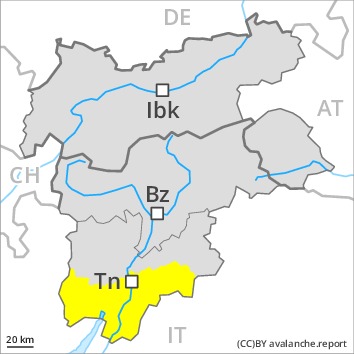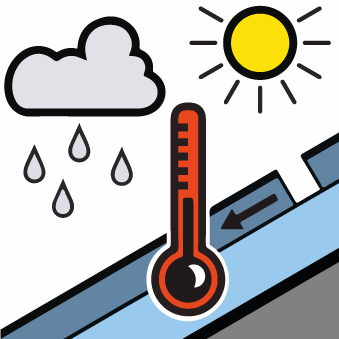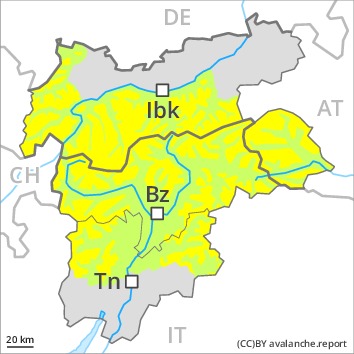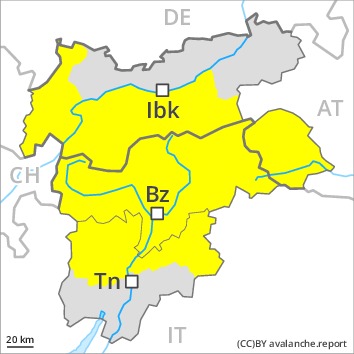
Danger level
 | 1500m
|
Avalanche Problem
 | | Wet snow |
|  | |  |
 | | Gliding snow |
|  | |  |
 | | Wind-drifted snow |
|  | |  |

Moist and wet avalanches require caution. In particular in the Prealps warming.
Gradual increase in danger of moist and wet avalanches as a consequence of warming during the day and solar radiation. In some places moist avalanches can also penetrate deep layers and reach quite a large size.
In addition an appreciable danger of gliding avalanches exists. Areas with glide cracks are to be avoided.
The fresh and older wind slabs are to be evaluated with care and prudence in particular in rocky terrain. They can be released, especially by large additional loads, on steep shady slopes above the tree line. Caution is to be exercised at their margins in particular.
Backcountry tours should be started and concluded early. Off-piste activities call for a certain restraint.
Snowpack
dp.10: springtime scenario
The meteorological conditions facilitated a gradual strengthening of the near-surface layers in particular on sunny slopes. The no longer entirely fresh wind slabs remain in some cases prone to triggering on steep shady slopes.
Faceted weak layers exist in the centre of the snowpack in particular in areas close to the tree line. This also applies in gullies and bowls below the tree line.
Towards its base, the snowpack is wet and its surface has a melt-freeze crust, in particular at low and intermediate altitudes.
Tendency
As a consequence of rising temperatures and solar radiation a sometimes critical avalanche situation will develop during the next few days. The avalanche danger will increase significantly during the day.
AM

Danger level
 | 2400m
|
Avalanche Problem
PM

Danger level
 | 2400m
|
Avalanche Problem
 | | Wind-drifted snow |
|  | |  |
 | | Wet snow |
|  | |  |
Wind slabs are to be evaluated with care and prudence. Slight increase in danger of wet and gliding avalanches in the course of the day.
The more recent wind slabs can be released in isolated cases, but mostly only by large additional loads, especially on very steep shady slopes above approximately 2400 m. Caution is to be exercised adjacent to ridgelines. The prevalence of avalanche prone locations and likelihood of triggering will increase with altitude.
Avalanches can additionally in isolated cases be released in the weakly bonded old snow, in particular by large additional loads, especially at transitions from a shallow to a deep snowpack, when entering gullies and bowls for example. These avalanche prone locations are rather rare.
As the day progresses as a consequence of warming during the day and solar radiation there will be a gradual increase in the danger of wet and gliding avalanches, especially on very steep sunny slopes.
Snowpack
dp.6: cold, loose snow and wind
dp.7: snow-poor zones in snow-rich surrounding
The mostly small wind slabs of the last few days are lying on unfavourable layers in particular on steep shady slopes above approximately 2400 m. As a consequence of mild temperatures and solar radiation the snow drift accumulations stabilised. Isolated avalanche prone weak layers exist in the centre of the snowpack.
The surface of the snowpack will freeze to form a strong crust and will soften during the day. Towards its surface, the snowpack is moist, in particular on steep sunny slopes below approximately 2400 m.
Tendency
Slight increase in danger of wet avalanches as a consequence of warming during the day.
















